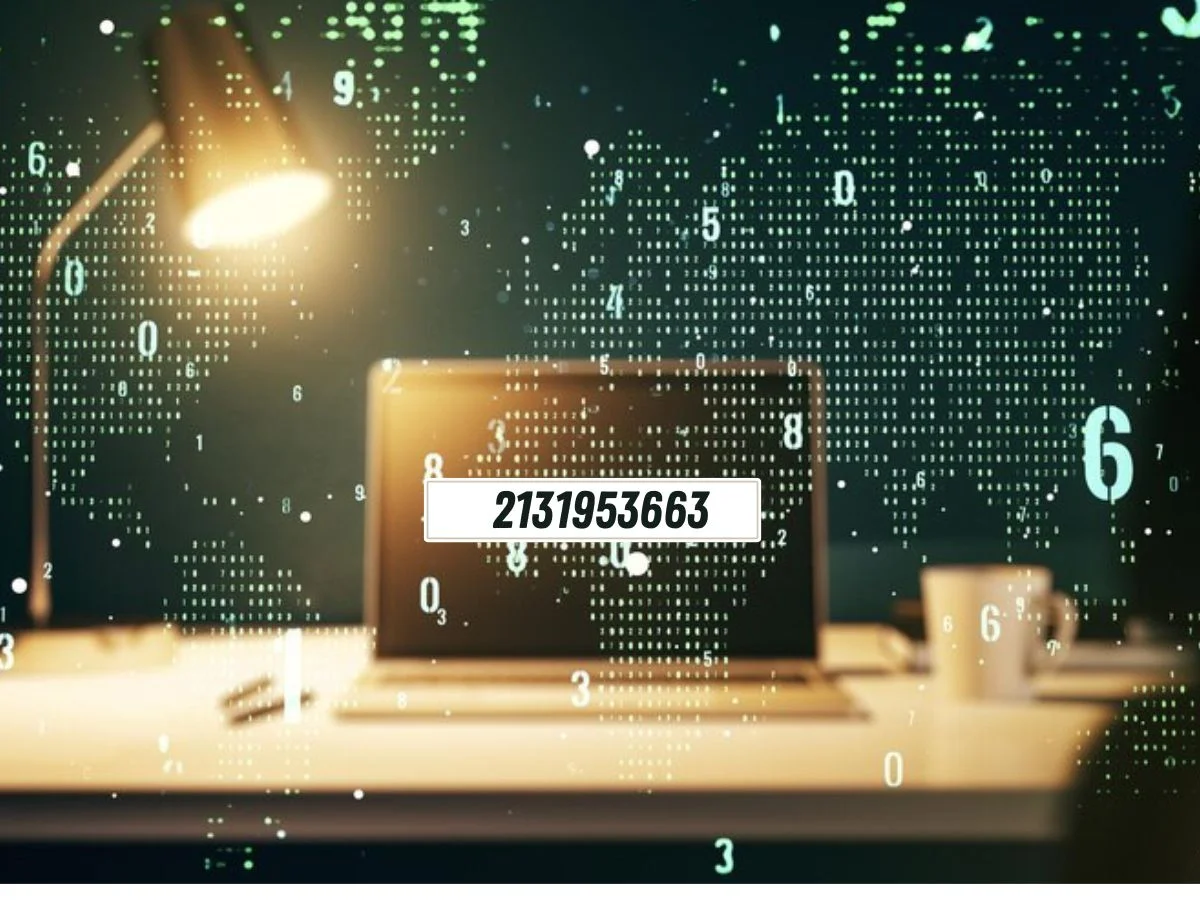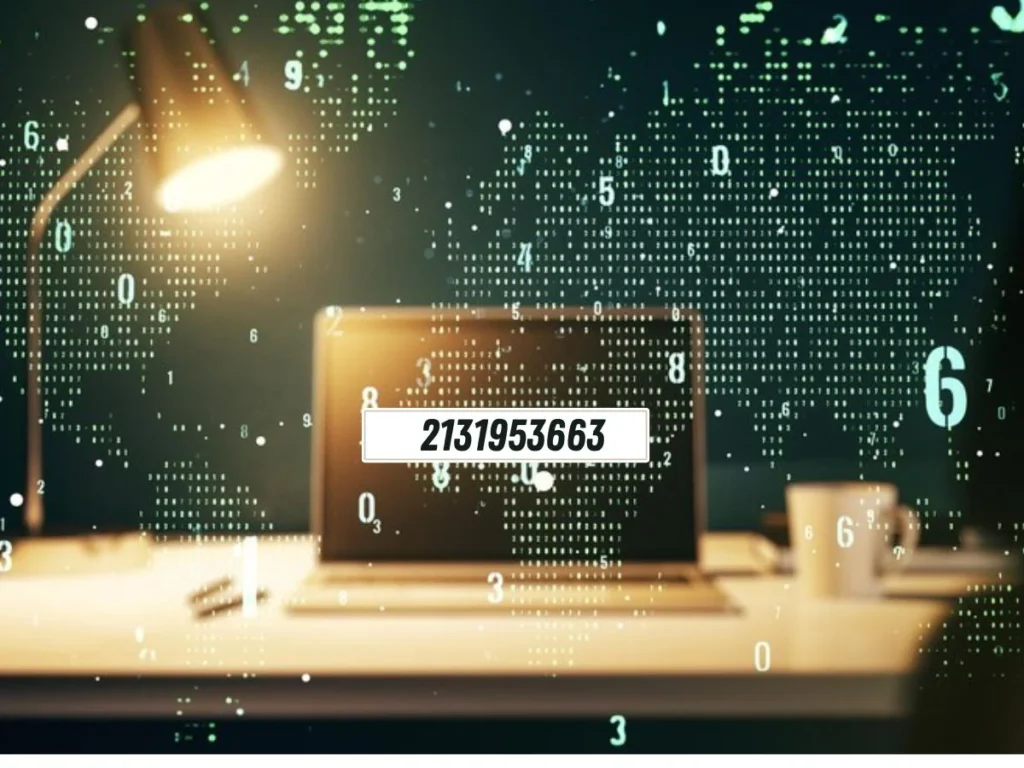Business
Stichting Bouwresearch: Pioneering Innovations in Construction

In the dynamic landscape of construction, innovation is key to sustainable progress. Stichting Bouwresearch stands at the forefront of this movement, pioneering groundbreaking initiatives and spearheading advancements that shape the future of construction. Founded with a vision to revolutionize the industry, Stichting Bouwresearch has consistently delivered innovative solutions, driving efficiency, sustainability, and safety across construction projects. Let’s delve into their pioneering innovations and explore how they are redefining the construction sector.
Sustainable Construction Practices
In a world increasingly focused on environmental sustainability, Stichting Bouwresearch leads the charge in promoting eco-friendly construction practices. From utilizing renewable materials to implementing energy-efficient designs, they are committed to reducing the ecological footprint of construction projects while ensuring durability and quality.
Digitalization in Construction
Embracing the digital era, Stichting Bouwresearch leverages cutting-edge technologies to streamline construction processes. Through Building Information Modeling (BIM), drones, and other digital tools, they enhance efficiency, accuracy, and collaboration, revolutionizing the way projects are planned, executed, and managed.
Energy-Efficient Solutions
Addressing the global imperative for energy conservation, Stichting Bouwresearch develops innovative solutions to optimize energy usage in buildings and infrastructure. From passive design strategies to smart systems integration, their initiatives aim to minimize energy consumption and promote sustainability without compromising performance.
Safety Protocols and Standards
Safety is paramount in construction, and Stichting Bouwresearch is dedicated to establishing rigorous protocols and standards to ensure the well-being of workers and the public. Through research, training, and advocacy, they contribute to creating safer work environments and reducing accidents and injuries in the construction industry.
Green Building Materials
With a focus on sustainable materials, Stichting Bouwresearch explores alternatives to traditional construction materials that are environmentally friendly and resource-efficient. By promoting the use of recycled materials, low-impact products, and innovative composites, they foster a greener approach to building construction.
Urban Development Projects
In urban areas facing rapid growth and transformation, Stichting Bouwresearch plays a vital role in shaping sustainable development strategies. Through comprehensive urban planning, they address challenges such as housing shortages, infrastructure deficits, and environmental degradation, promoting livable, resilient cities for future generations.
Infrastructure Innovations
From transportation networks to water management systems, Stichting Bouwresearch drives innovations in infrastructure that enhance connectivity, resilience, and sustainability. Through research and development initiatives, they introduce novel technologies and methodologies to improve the efficiency, safety, and durability of infrastructure assets.
Collaborative Research Initiatives
Recognizing the power of collaboration, Stichting Bouwresearch partners with industry stakeholders, academic institutions, and government agencies to advance knowledge and innovation in construction. By fostering interdisciplinary research and knowledge exchange, they catalyze progress and drive collective action towards common goals.
Future Trends in Construction
Looking ahead, Stichting Bouwresearch anticipates and adapts to emerging trends that will shape the future of construction. From modular construction and 3D printing to resilient design and circular economy principles, they stay ahead of the curve, continuously innovating to meet evolving needs and challenges.
Conclusion
In conclusion, Stichting Bouwresearch stands as a beacon of innovation and excellence in the construction industry. Through their pioneering initiatives, they have not only transformed the way we build but also contributed to a more sustainable and resilient future. As the world faces unprecedented challenges, the role of organizations like Stichting Bouwresearch becomes increasingly vital in driving positive change and shaping a better tomorrow for generations to come.
Frequently Asked Questions about Stichting Bouwresearch
1. What is Stichting Bouwresearch? Stichting Bouwresearch, also known as the Netherlands Building Research Foundation, is a non-profit organization dedicated to research and innovation in the construction industry. It serves as a knowledge platform for professionals in the building sector, facilitating collaboration and driving advancements in construction practices.
2. What is the mission of Stichting Bouwresearch? The mission of Stichting Bouwresearch is to promote sustainable, safe, and efficient construction practices through research, innovation, and knowledge dissemination. It aims to address current and future challenges facing the construction industry by fostering interdisciplinary collaboration and providing valuable insights and solutions.
3. What types of research does Stichting Bouwresearch undertake? Stichting Bouwresearch conducts a wide range of research projects covering various aspects of the construction industry, including sustainable building materials, energy-efficient design and construction methods, safety regulations and practices, building codes compliance, and technological innovations such as digitalization and Building Information Modeling (BIM).
4. How does Stichting Bouwresearch contribute to the construction industry? Stichting Bouwresearch contributes to the construction industry by providing valuable research findings, technical guidelines, and best practices that help professionals improve their projects’ quality, sustainability, and safety. It also fosters knowledge exchange and collaboration among stakeholders, including architects, engineers, contractors, policymakers, and researchers.
5. Who can benefit from the resources provided by Stichting Bouwresearch? Professionals and organizations involved in the construction industry, including architects, engineers, contractors, developers, building owners, government agencies, and research institutions, can benefit from the resources and expertise offered by Stichting Bouwresearch. Additionally, students and educators in construction-related fields can access valuable educational materials and research insights.
6. How can individuals and organizations engage with Stichting Bouwresearch? Individuals and organizations can engage with Stichting Bouwresearch by participating in research projects, attending workshops, seminars, and conferences organized by the foundation, accessing publications and technical reports, collaborating on joint initiatives, and contributing expertise or funding to support research activities.
7. Is Stichting Bouwresearch affiliated with any government agencies or industry organizations? Stichting Bouwresearch collaborates with various government agencies, industry associations, and academic institutions in the Netherlands and internationally. It works closely with organizations such as the Dutch Ministry of Infrastructure and Water Management, the Netherlands Organisation for Applied Scientific Research (TNO), and industry associations like Bouwend Nederland and NLingenieurs to address common challenges and promote innovation in the construction sector.
8. How does Stichting Bouwresearch ensure the quality and relevance of its research projects? Stichting Bouwresearch maintains high standards of quality and relevance in its research projects by engaging experts and stakeholders from diverse backgrounds, conducting thorough literature reviews, employing rigorous methodologies, and adhering to industry best practices. Research topics are selected based on their significance to the construction industry and their potential to address current and future challenges effectively.
9. Are the research findings and publications of Stichting Bouwresearch publicly available? Yes, the research findings, publications, and technical reports produced by Stichting Bouwresearch are typically made publicly available through its website, conferences, workshops, and other dissemination channels. This open-access approach allows professionals, researchers, policymakers, and other stakeholders to benefit from the knowledge and insights generated by the foundation’s research activities.
10. How can I stay updated on the latest developments and initiatives of Stichting Bouwresearch? You can stay updated on the latest developments and initiatives of Stichting Bouwresearch by visiting its official website, subscribing to its newsletters and mailing lists, following its social media channels, and attending its events and workshops. Additionally, you can reach out directly to the foundation’s staff members for specific inquiries or collaboration opportunities.
Business
Home Sale Made Easy: Efficient Tactics for Selling Your House

Selling your home doesn’t have to be fraught with uncertainty and stress. With the proper techniques and understanding of the market dynamics, homeowners can navigate the complexities of this task with grace and efficiency. Resources can be instrumental in providing guidance, but harnessing a broad range of strategies is crucial.
Before diving into the specific strategies, let’s consider some key takeaways that will emerge throughout this guide:
- Market Knowledge: Deep insights into real estate trends can position your home effectively within the market.
- Home Presentation: A well-maintained and aesthetically pleasing property is more likely to attract and retain buyer interest.
- Appropriate Pricing: Realistic and market-driven pricing strategies are foundational to a quick sale.
- Maintenance and Upgrades: Addressing home repairs and considering strategic upgrades can significantly improve the value proposition of your home.
- Access and Negotiations: Being accommodating and open to negotiation can broaden the appeal to potential buyers.
- Marketing and Professional Support: A robust marketing plan paired with professional advice can streamline the sales process and enhance the outcomes.
- Emotional Preparedness: Selling your home is as much an emotional endeavor as a financial one, and preparation in this aspect is crucial.
Tapping into Market Insights
Understanding fluctuations in property values, buyer demand, and the economic forces at play can help inform crucial decisions, such as when to sell and at what price. Sellers can use complex data to align their expectations with market realities by staying abreast of industry reports and analyses. These insights not only help set a competitive price but can also shed light on the types of properties and amenities currently in demand, enabling sellers to highlight similar features in their homes.
Highlighting Your Home’s Strengths
Your home possesses unique qualities that attract interest and command a premium price. Accentuating features like a modern kitchen, smart-home technology, or a well-designed outdoor space make the property more enticing. Such strengths can become compelling selling points when revealed through professional imagery and descriptive narratives. The significance of first impressions cannot be overstated. Help from real estate agents, like those from Home Offer Guys, provides fast and hassle-free solutions for selling your home.
Setting the Right Price
Finding the perfect pricing sweet spot is a delicate balance that could make or break a home sale. An overpriced home might discourage potential buyers, while a price that’s too low could mean a faster sale but at the cost of profit. Sellers need to appraise their homes accurately against comparable properties. This practical analysis of the market and similar homes ensures a competitive price to attract severe buyers without leaving money on the table.
Making Necessary Repairs and Improvements
Ensuring your home is in tip-top condition before listing can expedite the selling process. From cosmetic touch-ups and minor fixes to more significant repairs, attention to detail can help a listing stand out. When considering improvements, it’s wise to consider the potential return on investment; for instance, modernizing certain home elements or investing in eco-friendly installations can make the property more attractive to today’s environmentally conscious buyers. A thorough pre-sale home inspection can reveal areas that, if improved, might increase the home’s overall value and appeal.
Effective and Communicative Marketing
A robust marketing strategy, layered with open lines of communication, is indispensable for attracting severe and qualified buyers. Your marketing efforts should encompass a blend of digital marketing—such as listing on online platforms and utilizing social media—and traditional methods like open-house events or print advertisements. This multifaceted approach ensures a broad reach, capturing the attention of buyers across various channels. Being transparent and detailed in your property descriptions and maintaining a responsive stance to inquiries exemplifies professionalism and can quicken the sales process. With their in-depth knowledge of the neighborhood and current market trends, Brooklyn Park Realtors can confidently help you buy or sell properties.
Leveraging Professional Expertise
Enlisting the help of an experienced real estate agent or consultant can offer numerous advantages in terms of marketing acumen, negotiation skills, and administrative management. These specialists have a thorough awareness of the market, are skilled at reaching out to possible buyers, and help assist sellers through the complexity of legal and financial obligations, lessening the stress and anxiety of selling a house.
Business
Exploring Merchant Cash Advances: A Review of Blursoft Solutions

Introduction Merchant Cash Advance
Merchant Cash Advances (MCAs) have become a pivotal solution in the landscape of business financing. In this article, we delve into the nuances of Blursoft as an MCA provider, highlighting its distinctive features and functionalities. In today’s fast-paced financial environment, small businesses often find themselves in need of quick funding to seize growth opportunities or manage unexpected expenses. Traditional loans can be restrictive and time-consuming to secure, leading many businesses to explore alternative financing options like Merchant Cash Advances (MCA). One such provider in this space is Blursoft, a company that has garnered attention for its services tailored to entrepreneurs with less-than-perfect credit scores. This article provides a comprehensive review of Blursoft, evaluating its Merchant Cash Advance offerings, customer service, application process, and overall reliability.
What is a Merchant Cash Advance?
Before diving into Blursoft’s specific services, it’s important to understand what a Merchant Cash Advance is. An MCA is not a loan but rather an advance based on the future credit card sales of a business. The provider offers an upfront sum which is then repaid through a percentage of daily or weekly credit card sales, plus fees. This structure provides flexibility to businesses as the repayment amount adjusts with their sales volume, which can be particularly beneficial during slower business periods.
In-Depth Analysis of Blursoft Merchant Cash Advances
Core Functionality
Blursoft’s MCAs operate uniquely, withholding a percentage of credit card transactions on a monthly basis. Repayment terms are structured, ensuring a feasible schedule for businesses to navigate.
Costs and Fees
The breakdown of Blursoft’s MCA fees encompasses various components like factor rates and transaction fees. Comparisons with industry averages provide insights into transparency, while the impact on effective APR sheds light on the true cost.
Application Process
Navigating through Blursoft’s application process involves clear steps, with elucidated documentation requirements and eligibility criteria. The approval speed is noteworthy, promising a swift turnaround time.
User Experience
Blursoft’s online platform is designed for user-friendliness, simplifying the application process. Additionally, their customer service channels exhibit responsiveness, enhancing the overall user experience.
Advantages and Disadvantages of Blursoft MCAs
Advantages
Blursoft’s MCAs offer rapid funding, a boon compared to traditional loan avenues. The potential for approval, even with less-than-perfect credit, provides a lifeline to many businesses. Moreover, the flexibility in repayment tied to sales scalability offers a pragmatic approach to financing.
Disadvantages
However, the cost aspect warrants scrutiny, with factor rates and fees potentially leading to high expenses. There’s also a risk of cash flow strain during sales fluctuations, highlighting a key challenge. Furthermore, limited transparency in comparison to traditional loans necessitates careful consideration.
Blursoft Reviews and Customer Experiences
Independent review sites paint a vivid picture of customer experiences with Blursoft. Analyzing these reviews uncovers common themes, providing valuable insights into the strengths and weaknesses of their offerings. Authentic quotes or excerpts add credibility to the discourse.
Alternatives to Blursoft Merchant Cash Advances
Exploring alternative financing options opens avenues for small businesses. From traditional small business loans to lines of credit, invoice factoring, and crowdfunding, the spectrum is vast. Comparative analysis across features, interest rates, and eligibility requirements ensures a comprehensive understanding.
Blursoft’s Merchant Cash Advance Services
Blursoft positions itself as a financial partner for small businesses, particularly those that have difficulty accessing traditional banking products due to poor credit histories or newer business status. Here are key features of their MCA service:
- Credit Flexibility: One of the standout features of Blursoft is its willingness to work with business owners who have low credit scores. This makes it a viable option for those who might be turned away by other financial institutions.
- Quick Access to Funds: Blursoft understands that businesses seeking MCAs often need funds quickly. They claim to offer fast processing times, with potential funding available within 24 to 48 hours after approval.
- Percentage-Based Repayment: Consistent with other MCA providers, Blursoft’s repayment terms include taking a fixed percentage of daily or weekly sales. This approach can ease financial pressure during periods of lower business revenue.
- High Approval Rates: Blursoft advertises high approval rates for applicants, which can be a critical factor for businesses that have urgent funding needs and cannot afford to undergo lengthy application processes.
Application Process
Applying for an MCA through Blursoft is designed to be straightforward. Prospective borrowers must fill out an online application form providing basic information about their business, including monthly sales and business tenure. Blursoft typically requires minimal documentation compared to traditional lenders, which can speed up the approval process.
Customer Experiences and Reviews
Customer feedback is a crucial aspect of evaluating any financial service provider. Reviews of Blursoft are mixed, with many customers praising the quick access to funds and the ease of the application process. Negative reviews, however, often point to the high cost of capital and aggressive repayment methods, which are common criticisms across the MCA industry. Potential customers should carefully consider whether the cost of an MCA makes sense for their financial situation and business model.
Conclusion
Blursoft’s Merchant Cash Advance offers a lifeline to businesses in need of quick financing with minimal credit requirements. The percentage-based repayment model aligns the company’s success with that of its customers, a feature that can offer comfort during fluctuations in business income. Nevertheless, as with all MCAs, the costs can be higher than traditional financing options, and the structure might not be suitable for every business. Prospective borrowers should weigh the benefits against the potential downsides and consider their ability to manage the repayment structure before committing. In conclusion, Blursoft MCAs present a blend of opportunities and challenges. Summarizing key takeaways emphasizes the need for a tailored approach, aligning business needs with available financing options. Additionally, the importance of comparing Blursoft with alternatives underscores informed decision-making.
Disclaimer (Optional)
It’s crucial to note that this review is independent, and we’re not affiliated with Blursoft. Readers are encouraged to conduct thorough research before committing to any financial decisions, ensuring alignment with their business objectives.
By adhering to these guidelines and considerations, businesses can navigate the intricate landscape of merchant cash advances effectively.
FAQs
- What are Blursoft Merchant Cash Advances?
- Blursoft MCAs withhold a percentage of credit card transactions monthly for repayment, offering fast funding.
- How do Blursoft’s fees compare to industry averages?
- Blursoft’s fees include factor rates and transaction fees, impacting effective APR and transparency.
- What documents are required for a Blursoft MCA application?
- Blursoft’s application process mandates specific documentation, ensuring eligibility and swift approval.
- What are the advantages of choosing Blursoft MCAs?
- Advantages include rapid funding, potential approval with imperfect credit, and flexible repayment tied to sales.
- Are there alternatives to Blursoft MCAs?
- Yes, options like small business loans, lines of credit, invoice factoring, and crowdfunding provide alternatives.
Business
Unveiling the Enigma: A Guide to Decoding 2131953663

Introduction 2131953663
In the vast realm of cryptography, there exists a code that has baffled many: “2131953663”. Its cryptic arrangement of numbers poses a challenge to even the most seasoned codebreakers. Yet, within this challenge lies an opportunity to unravel the mysteries of encryption and decryption. In this guide, we embark on a journey to demystify not only the enigmatic code “2131953663” but also the broader world of crypto codes. Capture the intrigue: Introduce the mysterious code “2131953663” and pique the reader’s interest in deciphering it. The code “2131953663” stands as a testament to the power of cryptography to conceal information in plain sight. Its digits hold a secret waiting to be unveiled, a message concealed within its seemingly random arrangement. But fear not, for with the right knowledge and approach, we can decipher its hidden meaning and unlock its secrets. Hint at the bigger picture: Briefly explain crypto codes and their role in unlocking secrets and hidden messages. Cryptography, the art of secure communication, has played a pivotal role throughout history, from ancient civilizations to the digital age. At its core, cryptography involves the transformation of plaintext into ciphertext through encryption, rendering it unreadable without the proper decryption key. This process serves to protect sensitive information from unauthorized access, ensuring privacy and security in communication. In a world awash with information and hidden messages, certain sequences of numbers can sometimes spark curiosity and intrigue. The number 2131953663 is no exception. At first glance, it may seem like an arbitrary string of digits, but a deeper dive might reveal a tapestry of hidden meanings, contexts, or even coded messages. In this article, we’ll explore various techniques and contexts to decode and understand what 2131953663 could potentially represent.
The Basics of Number Decoding
Number decoding can involve several methods, ranging from simple numeral translation to complex mathematical analysis. Here are a few initial steps one might consider:
- Numerological Analysis: Numerology is the belief in the divine or mystical relationship between numbers and coinciding events. In numerology, every number has a meaning. Breaking down 2131953663 into single digits and exploring their individual or collective significance could yield some insights.
- Mathematical Decomposition: This involves breaking down the number into factors or exploring its properties in number theory. For example, determining if it’s prime, identifying its prime factors, or analyzing it in different numeral systems (like binary or hexadecimal).
- Historical and Cultural Context: Numbers often hold significance in specific historical or cultural contexts. For example, the digits in 2131953663 might represent important dates, events, or codes in a historical setting.
Part 1: Demystifying Crypto Codes
Foundational knowledge:
To embark on our journey of code-breaking, it is essential to first understand the fundamentals of cryptology. Cryptology encompasses both cryptography and cryptanalysis, the study of cryptographic techniques and their vulnerabilities, respectively. Within this field, cryptography serves as the cornerstone, encompassing the principles and methods used to secure information.
Encryption and decryption form the bedrock of cryptographic processes. Encryption involves transforming plaintext into ciphertext, making it unintelligible to anyone without the decryption key. Conversely, decryption reverses this process, converting ciphertext back into its original plaintext form.
Common encryption techniques:
Our exploration of crypto codes begins with an introduction to basic encryption techniques. These techniques serve as building blocks for more complex cryptographic systems, offering insights into the principles of encryption and decryption.
The Caesar cipher, named after Julius Caesar, is one of the earliest known encryption methods. It operates by shifting each letter in the plaintext by a fixed number of positions in the alphabet. For example, a Caesar cipher with a shift of three would encode “A” as “D”, “B” as “E”, and so forth.
Substitution ciphers, another fundamental encryption method, involve replacing each letter in the plaintext with a different letter or symbol. Unlike the Caesar cipher, substitution ciphers do not adhere to a fixed shift pattern, making them more challenging to decrypt without knowledge of the substitution key.
Transposition ciphers, on the other hand, focus on rearranging the order of letters in the plaintext according to a predetermined rule or key. This process involves permuting the positions of letters rather than altering their identities, adding another layer of complexity to the encryption process.
A historical perspective (optional):
Before delving further into decryption strategies, it is worth briefly exploring the rich history of cryptography. Throughout the ages, cryptography has played a crucial role in safeguarding sensitive information and shaping the course of history.
One of the most iconic cryptographic devices in history is the Enigma machine, used by the German military during World War II to encrypt sensitive communications. Its complex system of rotors and plugboards rendered intercepted messages virtually indecipherable, posing a formidable challenge to Allied codebreakers.

Part 2: Cracking the Code: Approaches to Decoding 2131953663
Gather clues:
As we turn our attention to the enigmatic code “2131953663”, our first task is to gather clues that may shed light on its underlying meaning. Examining the code itself, we observe a sequence of numbers seemingly devoid of pattern or structure. However, upon closer inspection, patterns may emerge, offering valuable insights into its encryption method.
Context also plays a crucial role in deciphering the code. Where did we encounter it? Was it accompanied by any additional information or context that may provide hints regarding its meaning? By considering the circumstances surrounding the code’s appearance, we may uncover clues that guide us towards its decryption.
Identify the code type:
Based on our observations and analysis, we can begin to speculate on the possible encryption technique used to encode the code “2131953663”. Is it a Caesar cipher, a substitution cipher, or perhaps a transposition cipher? By identifying the underlying code type, we can narrow down our decryption efforts and focus on relevant strategies.
Decoding strategies:
Armed with knowledge of the code type, we can now explore decryption methods tailored to each encryption technique.
In the case of a Caesar cipher, our approach involves systematically shifting the numbers in the code by different amounts, exploring each possibility until a coherent message emerges. This brute-force method relies on trial and error but can be effective for simpler codes.
Substitution ciphers require a different approach, focusing on identifying recurring patterns within the code that may correspond to specific letters or symbols. By analyzing frequency distributions and common letter combinations, we can begin to unravel the substitution key and decode the message.
Transposition ciphers, while less common, present their own set of challenges. Decoding such ciphers involves rearranging the numbers in the code according to a predetermined rule or key, effectively unscrambling the message hidden within.
Emphasize that without additional clues or knowledge of the encryption method, successfully decoding the code might be challenging.
It is important to acknowledge that decoding the code “2131953663” may prove challenging without additional information or context. While cryptographic techniques offer powerful tools for deciphering encrypted messages, they rely heavily on the availability of clues and insights into the encryption method used.
Part 3: Beyond the Code: Exploring Cryptography Further
Intriguing applications:
Beyond the realm of code-breaking, cryptography finds widespread application in various fields, particularly in the realm of cybersecurity. Encryption algorithms safeguard sensitive data during transmission and storage, protecting it from unauthorized access and interception.
One of the most groundbreaking applications of cryptography is blockchain technology, which underpins cryptocurrencies like Bitcoin and Ethereum. By utilizing cryptographic techniques such as hashing and digital signatures, blockchain networks ensure the integrity and security of transactions, revolutionizing the way we exchange value online.
Where to learn more:
For those eager to delve deeper into the captivating world of cryptography, a wealth of resources awaits. Online courses, books, and websites offer comprehensive insights into cryptographic principles, techniques, and applications. Whether you’re a novice or seasoned cryptographer, these resources provide invaluable knowledge and guidance on your journey of discovery.
Digital Age Decoding
In the digital era, sequences of numbers often have technological significance:
- ASCII/Binary Codes: Each digit or a group of digits might represent an ASCII value, which corresponds to a character in the ASCII table. Converting these into letters might spell out words or messages.
- Telecommunication Formats: Phone numbers, IP addresses, or other digital identifiers might be encoded in numerical sequences. For instance, 2131953663 might appear to be a phone number or part of a larger technical specification.
- Hashes and Encrypted Data: In cybersecurity, numbers can be hashes or encrypted data. Though decoding such without the cipher or key is challenging, recognizing the format can provide clues about its origin or purpose.
Creative and Miscellaneous Interpretations
Beyond traditional and technological approaches, numbers can be interpreted more creatively:
- Aesthetic Patterns: Recognizing patterns such as repetition, palindromes, or sequences might provide aesthetic or artistic interpretations.
- Personal or Psychological Meaning: Sometimes, numbers resonate on a personal or psychological level, perhaps representing significant dates, like birthdays or anniversaries.
Case Study: Decoding 2131953663
Let’s apply some of these techniques to the number 2131953663:
- Numerology: The breakdown yields 2, 1, 3, 1, 9, 5, 3, 6, 6, 3. However, without more specific numerological knowledge, this approach doesn’t give us much.
- ASCII Interpretation: Converting segments into ASCII characters (assuming each segment corresponds to an ASCII value) doesn’t yield coherent results as individual digits fall outside typical printable character ranges.
- Date Interpretation: Interpreting parts of the number as a date, for example, 21/3/1953 and 663 could point toward historical events or context, but this might be reaching without additional context.
Conclusion
Decoding a number like 2131953663 can be an exercise in creativity as much as an application of logical decoding techniques. Without additional context, such as where or how this number was used, much of the interpretation relies on speculation or broad application of various decoding methods. Nevertheless, this explorative process enhances our understanding of how numbers can be seen not just as units of counting but as carriers of information, culture, and even mystery. Whether the number holds a deeper significance or is just a random sequence, the journey into its possible meanings is both educational and intriguing.
In our quest to decode the enigmatic code “2131953663”, we have embarked on a journey through the intricacies of cryptography. Along the way, we have explored foundational concepts, decryption strategies, and real-world applications, gaining a deeper understanding of the art and science of secure communication.
As we conclude our journey, let us reflect on the mystery and intrigue that surrounds cryptographic codes, from ancient ciphers to modern encryption algorithms. While the code “2131953663” may remain a tantalizing enigma, our exploration has equipped us with the knowledge and tools to tackle future challenges in the realm of cryptography.
FAQs
- What is the Caesar cipher?
- Answer: Caesar cipher is a substitution cipher where each letter is shifted by a fixed number.
- How does blockchain use cryptography?
- Answer: Blockchain relies on cryptographic techniques like hashing for secure transactions.
- How can I learn cryptography?
- Answer: Explore online courses, books, and websites for comprehensive learning resources.
- What is the Enigma machine?
- Answer: The Enigma machine was a cipher device used by the German military during World War II.
- What are the basics of cryptology?
- Answer: Cryptology encompasses cryptography and cryptanalysis, focusing on secure communication methods
-

 Tech5 months ago
Tech5 months agoGeekzilla.tech Honor Magic 5 Pro: Unveiling the Technological Marvel
-

 Blog5 months ago
Blog5 months agoGeekzilla Autos: Everything You Need To Know
-

 Blog5 months ago
Blog5 months agoGeekzilla Podcast: A Journey into Geek Culture
-

 Health5 months ago
Health5 months agoWellhealth how to build muscle Tag: Complete Guide
-

 Health5 months ago
Health5 months agoWellHealthOrganic Buffalo Milk Tag: Your Nutrient-Rich Dairy Upgrade
-

 Tech5 months ago
Tech5 months agoPikruos is a Leading Provider of Innovative IT Solutions
-

 Health5 months ago
Health5 months agoKecveto: The Ultimate Guide
-

 Lifestyle5 months ago
Lifestyle5 months agoThe Human Gathering Cult: Uniting People Lovingly
